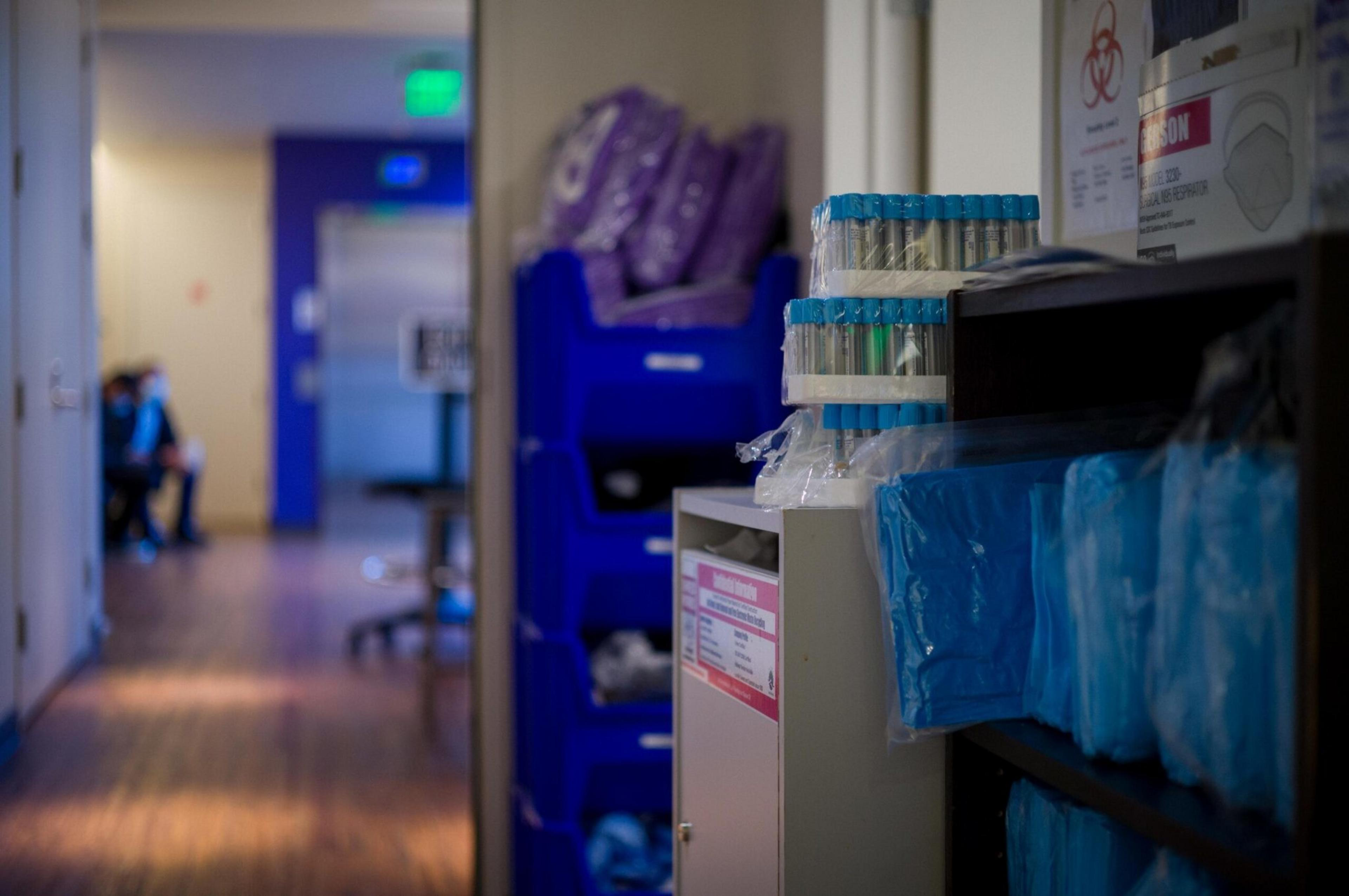On June 24, Dr. Monica Gandhi, an infectious disease and HIV/AIDS expert at UCSF published an article in The Atlantic entitled “The U.S. Is Underreacting to Monkeypox (opens in new tab).”
Four weeks later, she said that the country’s response is even further behind where she feared it would be.
“I wrote that thinking there would be no way we’d be where we are right now where people are waiting nine hours for a vaccine in New York and my clinic is turning people away because there is not enough vaccine supply,” Gandhi said in an interview.
The San Francisco Department of Public Health reported on Twitter that it has not been notified about the state of its next shipment of the Jynneos vaccine. DPH requested 35,000 doses, and has only received 7,800 as of July 25. The vaccine clinic at San Francisco General Hospital was closed Tuesday and Wednesday because of a lack of supply.
The federal government says it will have 1.9 million doses of the Jynneos vaccine available by the end of the year, but current distribution is only around 10% of that number. In any case, Gandhi said that is too little, too late.
That chasm between vaccine demand and available supply has local leaders sounding the alarm and demanding that federal authorities speed up their efforts to purchase and distribute vaccines. State Sen. Scott Wiener called for San Francisco and California to declare a state of emergency (opens in new tab) around the outbreak, citing the city’s 222 cases and the presence of the virus in wastewater data.
There have been no deaths yet in the United States due to monkeypox, but a recent study (opens in new tab) published in the New England Journal of Medicine found that 13% of infected patients were hospitalized due to issues ranging from severe anorectal pain to soft-tissue superinfection to myocarditis.
While it’s true most anyone can be infected with monkeypox—although previous smallpox inoculation confers some degree of protection—as of now the virus has largely been limited to the population of men who have sex with men.
Data from the CDC presented on July 26 (opens in new tab) shows that among the 3,591 infected Americans in the organization’s data, 99% were male at birth and all but five were attributed to sex between men.
So where does this go from here? According to Gandhi, it’s possible that the government gets its act together and is able to distribute the vaccine to the currently impacted population of men who have sex with men.
But another scenario, which looks increasingly likely amid the slow federal response, is eventual spillover into other groups. At that point, the strategy turns to vaccination of the entire population, like the widespread distribution of the HPV Gardasil vaccine.
“If we start seeing a greater proportion of infection in women, and that number keeps on growing, then we have to worry that it’s fundamentally an endemic STD and we can’t contain it by just vaccinating one population,” Gandhi said.
To boost the numbers of vaccinated individuals, the government could opt to open up use of ACAM2000, another smallpox vaccine whose precursor, Dryvax, was used to originally eradicate the disease. But it comes with drawbacks: As opposed to Jynneos, ACAM2000 is inadvisable for use in those who are pregnant, have eczema or similar skin conditions or patients who are immunocompromised. The vaccine has also been associated with additional negative side effects when compared to Jynneos.
While there has been some debate around public health messaging of the outbreak to men who have sex with men, Gandhi said directing treatments to those currently most at risk is key to containing monkeypox and delaying the inflection point where it runs out of control.
“I think it’s very appropriate to label the population most at risk so resources can be directed towards those populations,” Gandhi said using the example of elderly patients being at highest risk of severe illness from Covid-19.
“That’s actually what public health is. It’s always about targeting the populations most at risk so that you can direct your messages appropriately. If you have too diffuse a message, people don’t listen.”
